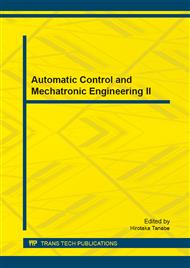p.524
p.529
p.534
p.538
p.544
p.548
p.555
p.561
p.565
The Aerodynamic Attributes and Flight Trajectories of a Tail Fin-Stabilized Projectile
Abstract:
Combined with low-speed wind tunnel experiments, this study adopted computational fluid dynamics (CFD) and the MATLAB/Simulink control software to analyze the aerodynamic attributes of a tail fin-stabilized projectile and subsequently simulate its flight trajectory with four degrees of freedom under a flight condition (M) of 0.6 and an angle of attack (α) between-60° and 60°. Comparing the CFD calculation results with the revised experiment data using the Karman-Tsien Rule showed that the aerodynamic coefficients CD, CL, and CM were similar within an angle of attack between-30° and 30°. The projectile further demonstrated excellent aerodynamic attributes within an angle of attack between-60° and 60°, maintaining stable flight. Furthermore, comparing the four-degrees-of-freedom simulation results with data from the firing table showed that the maximum height difference of trajectories at varying angles of elevation (mil) ranged from 3.07% to 4.68%, and the difference in the firing range distance ranged from 0.15% to 5.72%. To reduce the costs of field testing, this study establishes a method to design aerodynamic systems, analyze and compare flow fields, and simulate flight trajectories.
Info:
Periodical:
Pages:
544-547
Citation:
Online since:
September 2013
Authors:
Price:
Сopyright:
© 2013 Trans Tech Publications Ltd. All Rights Reserved
Share:
Citation:


